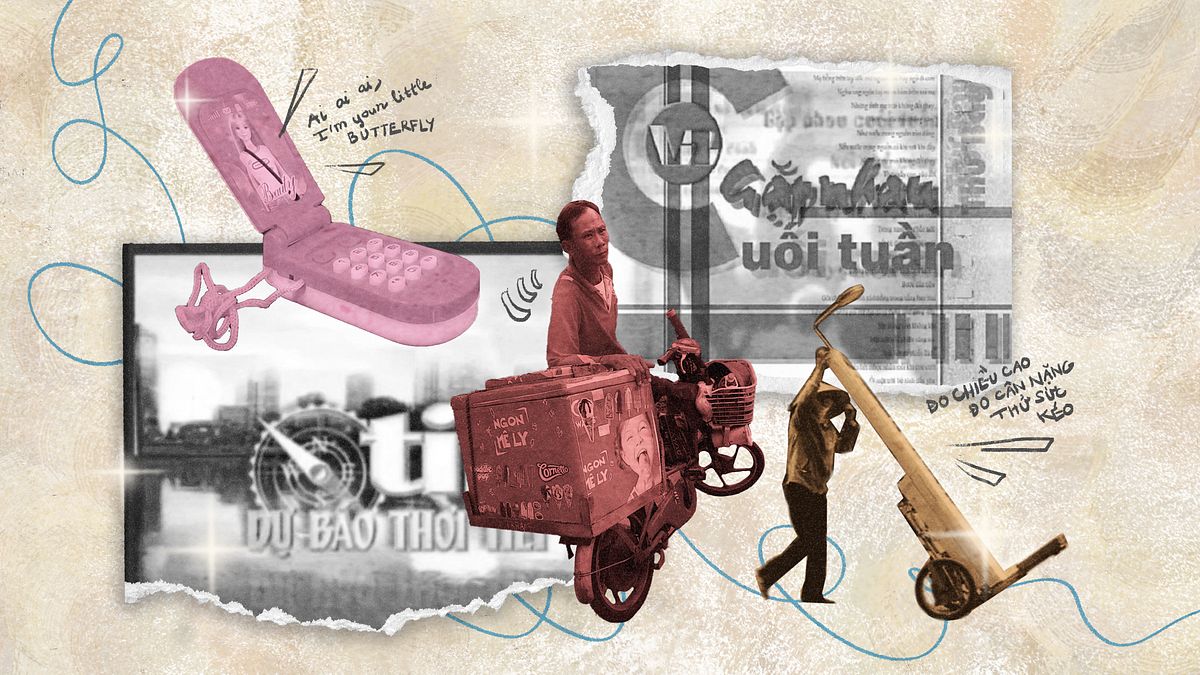After someone or something reaches the end of their days, which aspects of their existence in the minds of those who remain would be the first to succumb to the erosive brush of time? Is it sight, smell, touch, taste, or sound?
Sight is perhaps the most enduring of all. I keep a small passport photo of my late father in the inner pocket of my wallet. The wallpaper of my sister’s phone remains a picture of him beaming over a cake and candles we took on his last birthday we celebrated together. If I close my eyes right this moment, I can immediately transport myself to the days of my scrawny past, walking out the school gate at sunset and seeing his face there, strands of his curly, unwielding hair poking out from underneath a white helmet. There are visual reminders of his time with us safely stored in stacks of albums in our attics at home.
But these days, with every daybreak, it’s getting harder and harder to remember what he sounded like. He was a boisterous northern man whose every phone exchange would echo across whichever public space that was unfortunate enough to host us at the moment, so I remember the volume, but try as I might, I’ve lost the ability to conjure up the texture of his laughter, the timber of his reprimand, the twang of his call for me every time I step out of the school gate. He passed away in 2015, just a few months before I got my first phone with video recording capability, so to me, his existence today is purely confined to static poses in printed photos and soundless technicolor moments that my memory could retain. The voice of my late father, in the grand scheme of Saigon’s audio ecosystem, is entirely extinct.
Museums are there to slow down the decay of visual artworks; libraries are the archivists safekeeping the sanctity of knowledge past; and when it comes to sounds, perhaps our biggest ally in sound conservation is the internet, because, as the old adage goes, “the internet is forever.” My existence in Vietnam somewhat overlaps that bizarre timeline spanning the two extremes from “what is the inter-web?” to “every minutia of life is online,” so of the multitudes of sounds that I miss from my formative years, many have fortunately been documented, even though their original sources are no longer around. Amongst these functionally extinct audios include the theme song of comedic variety show Gặp Nhau Cuối Tuần, the jingle of ice-cream brand Wall’s, and the diverse meows of my orange cat Taxi, who passed away in 2020.

The opening sequence of Gặp Nhau Cuối Tuần. VTV has blocked embedding so you can listen to the theme song again here.
There was nothing particularly evocative of humor in the 30-second opening sequence of Gặp Nhau Cuối Tuần (Weekend Hang), but for a generation of millennials, that bass-heavy, bouncy tune was the prelude to the weekend. The show used to air on national channel VTV3 every Saturday at 10 am, so it often stretched over that magical weekly moment when I woke up realizing that I didn’t have to go to school, followed by an hour of lazing around in bed watching the show until my mother called me down to have lunch. Gặp Nhau Cuối Tuần only ran from 2000 to 2006, and even though it was recently rebooted this year, the new season didn’t revive the old theme song, which, for all intents and purposes, now only exists on old YouTube accounts.
The Wall's mobile cart jingle.
At times, I wonder if Wall’s was so culturally significant to me just because I was a child born into an era when we didn’t have many options in terms of entertainment, or because its jingle was truly a timeless earworm. It was only 10 music notes, rendered in rudimentary MIDI and broadcast by scratchy speakers attached to mobile vendors traversing every alley of Saigon to dish out refreshing popsicles with flavors like Dâu Rừng (Jungle Berries), Khoai Môn (Taro), and Sô-cô-la Chuối (Banana Chocolate). And yet, nothing could perk up a prepubescent Saigoneer the way those 10 notes did. We learnt them by heart and even invented childish lyrics to sing along, like “kem đến rồi, kem đến rồi, không có tiền thì không có kem / ice cream is here, ice cream is here, no money no ice cream.” In 2003, Wall’s was bought out by local F&B group KIDO, which rebranded the ice cream branch and phased out mobile vending. Those magical 10 notes were also gone from the sonic landscape of Saigon.
Jingles and theme songs often suffer the same tragic but simple fate: ceasing to exist the moment the creations they’re supposed to promote cease operation. But tracing the extinction of some other sounds is less straightforward.
The iconic cân sức khỏe as seen on a reality TV show.
I remember my first-ever visit to the supermarket with my parents vividly, when I was still in primary school, not because of the variety of colorful snacks or the smorgasbord of sights and sounds, but because the cân sức khỏe điện tử (electronic scale) that were parked outside of it. These scales towered over me back then, comprising an metallic disc above to measure one’s height while they stood on the scale, both functions were rather basic, but what made these scales so out-of-this-world to me was the fact that after a turn on the height-weight measure, the scale would deliver a health assessment and give blunt recommendations based on your stature, like “you’re 2 kilograms underweight, please nourish yourself” or “you’re slightly obese, please exercise and pay attention to your health.” Everything, from the promotional recording to the body weight commentary, was delivered in a distinctive northern female accent — which was strangely foreign to a southern child’s ears.
From a fairly recent interview with a mobile laminator, I’ve since learnt that this cân điện tử didn’t appear out of thin air. In the early 2000s, entire villages in the north where she lived were producing them and moved to Saigon to make a living weighing strangers. The music, promotional lines, and health assessments were all recorded there. However, this trade was not sustainable so scale vendors have gradually moved on over the years, her included. It’s impossible for me to tell if cân điện tử, and its idiosyncratic sounds, has been lost forever in the city, but I haven’t seen one for over 15 years, and finding a complete recording of its soundtrack online has proven to be a herculean feat.
Sticky traps might not be the most effective way to catch mice, but they might have the most memorable promotional material.
The audio of cân điện tử is just one artefact amongst thousands of street calls that are all extremely challenging to keep track of as, at times, they’re often considered not culturally significant enough to warrant documentation. The calls that come from tapes — like that of cân điện tử, mice sticky traps, bánh mì Sài Gòn, and hột vịt lộn — might be more accessible thanks to their uniformity and prevalence. Alas, the unique ones that hail from the dialect, creativity, and distinctive tonal qualities of their vendors will be gone for good once the vendors stop hitting the streets, be it due to a change in career, relocation, or worse, death. I’m still convinced that the COVID-19 pandemic has taken from us more than economic growth and citizens: when the people are gone, so are their culture, community, and lived experience.
















